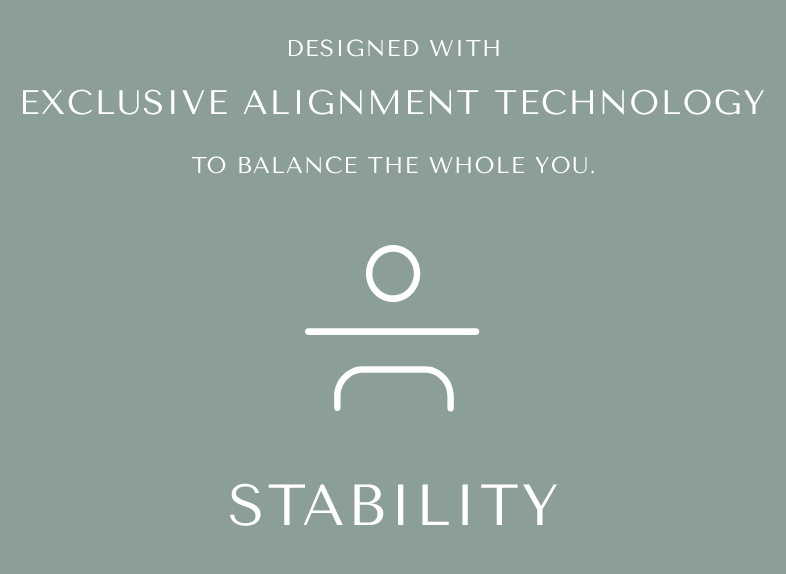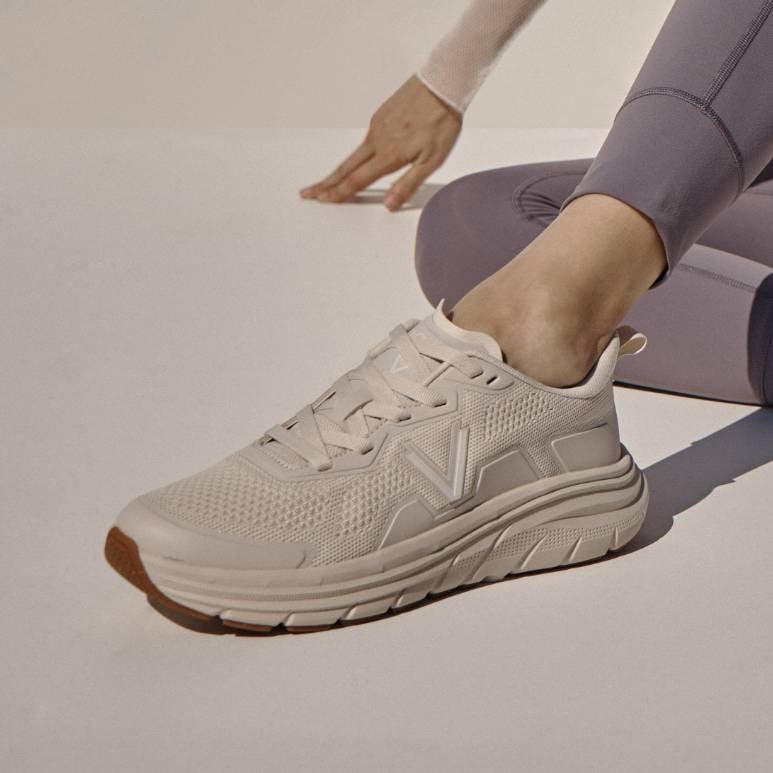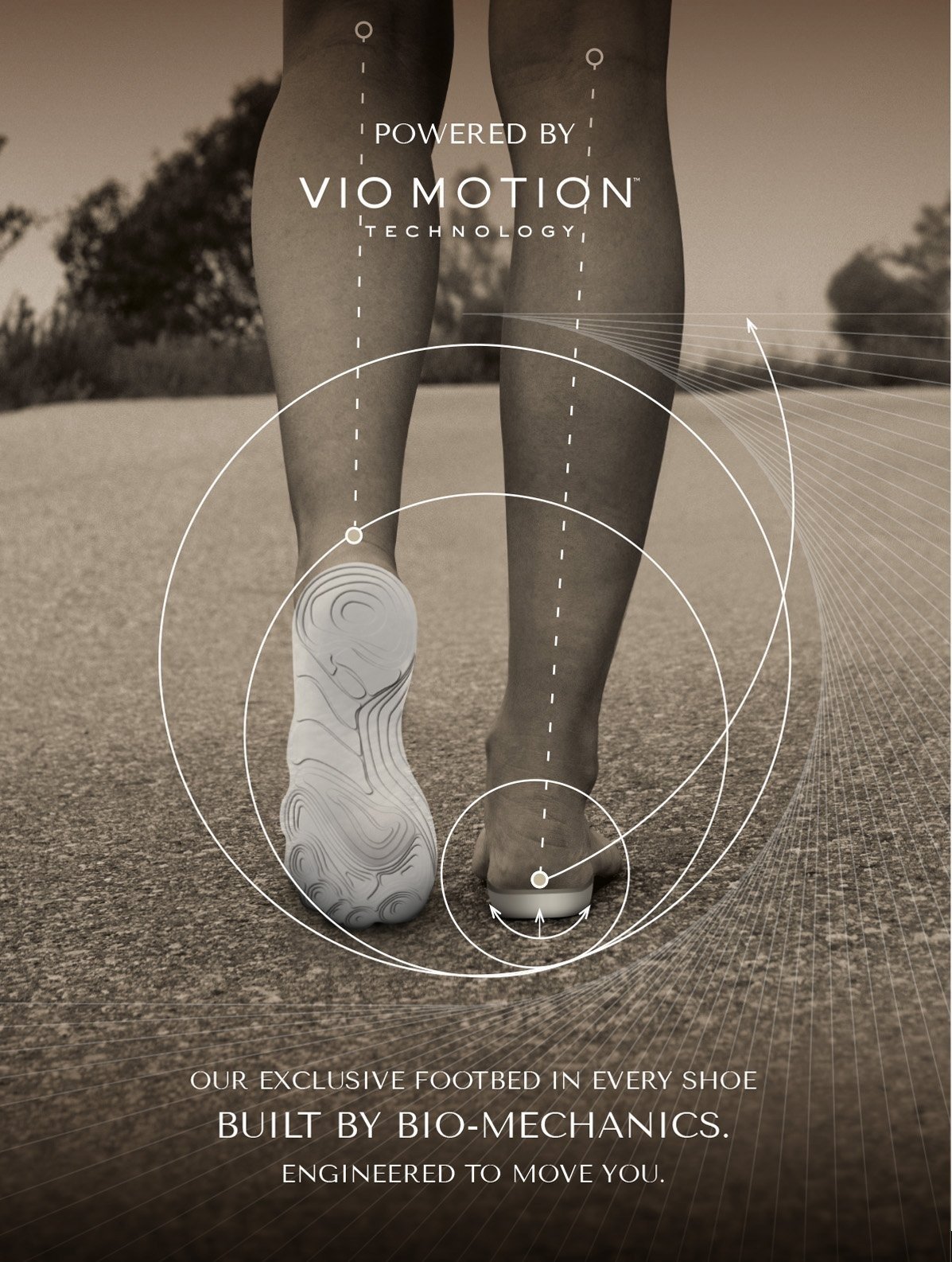FINDING RELIEF FROM PLANTAR FASCIITIS
Plantar fasciitis is a dull to severe pain in your heel caused by a strain and inflammation of your plantar fascia. The plantar fascia is a scientific name for “foot tissue.” This particular tissue is a ligament attached at one side to the heel bone. On the other side, the tissue fans out to attach at the base of each of your five toes. Plantar fasciitis is the name for the condition that develops when the tissue becomes inflamed. When the plantar fascia is excessively stretched, micro‑tears can occur, causing this swelling and subsequent pain as well as other foot problems like reduced stability or discomfort in your feet or ankles.
CAUSES OF
PLANTAR FASCIITIS
Plantar fasciitis can develop when your feet roll in too far as you take each step. This rolling in, known as over-pronation, can happen for many reasons, including poor materials in your footwear.
SYMPTOMS OF
PLANTAR FASCIITIS
A sharp pain in the center of your heel is most likely one of the biggest symptoms of plantar fasciitis. Some people may also feel increased strain in the sole of their foot.

HOW CAN VIONIC SHOES HELP YOU?
Foot pain from wearing the wrong shoes should not hold you back from your next adventure. Whether you are looking for supportive men's dress shoes, walking shoes, supportive running shoes, women's casual sneakers, or even a pair of comfortable walking sandals, Vionic has the perfect support shoes for you. Our shoes offer excellent arch support, cushioning, and shock absorption, making them ideal for those with plantar fasciitis, flat feet, or high arches. Discover the right shoe for your needs and experience the comfort and foot strength you deserve.
SHOES RECOGNIZED BY THE AMERICAN PODIATRIC MEDICAL ASSOCIATION
Vionic shoes are designed to provide superior comfort and support and are recognized by the American Podiatric Medical Association (APMA) for promoting foot health. This prestigious endorsement ensures that Vionic footwear meets the highest standards for arch support, alignment, and overall foot wellness. With APMA-approved designs, you can trust that our shoes help alleviate pain from plantar fasciitis and support your feet in every step you take.
HOW TO FIND RELIEF
Five Healthy Tips for Preventing or Reducing Plantar Fasciitis
-
 1.
1.BREAK THE CYCLE WITH SUPPORTIVE FOOTWEAR
Wearing orthopedic shoes or a plantar fasciitis insole (orthotics) is an easy, effective method of naturally realigning the foot. A groundbreaking study shows that Vionic sandals effectively alleviate heel pain. Worn consistently throughout the day, orthotic support is a great first step in the short‑term treatment of plantar fasciitis. Choose footwear that stays secure on your foot and make sure it provides extra cushioning and heel support.
-
 2.
2.STRETCH REGULARLY
Keeping your calf muscles limber helps to reduce the strain on the plantar fascia. To stretch your calves and Achilles tendon, stand on the edge of a step, resting your weight on the balls of your feet. Bend your knees for 25 seconds and then straighten. Perform up to five repetitions whenever tightening occurs.
-
 3.
3.PRESERVE YOUR ARCH WITH EXERCISES
While seated and barefoot, try this exercise to alleviate high arch, heel spurs, and plantar fasciitis pain: squeeze your foot as if you have a small marble under the ball of your foot. If you just happen to have a few marbles handy, you can actually practice picking them up between your toes and the ball of your foot — and then set them down again. This stretches and helps strengthen the muscles that run under metatarsals (the longest bones in the foot which create its arched shape), enhancing overall stability and comfort.
-
 4.
4.SLOWLY INCREASE PHYSICAL ACTIVITY
If you’re a runner, a tried and true method of preventing over‑use injuries is to only increase your mileage by 10% weekly, max. If you’re new to a walking program, the same caution should be exercised. Choose the best shoes with plush cushioning, like a supportive active shoe, a comfortable sneaker, or our specifically designed plantar fasciitis shoes that offer a balanced drop and ample toe box room.
-
 5.
5.ICE AND REST
After mild stretching, use a frozen water bottle to roll under the arch of your foot for 10-20 minutes or apply a cold pack to the bottom of your heel. It may be possible to make an active recovery by wearing Vio Motion technology to keep your feet naturally aligned, therefore reducing strain on the plantar fascia, while moving throughout your day. Choosing shoes made from high-quality materials with excellent sole construction can help your feet feel supported and energized as you heal.
-


